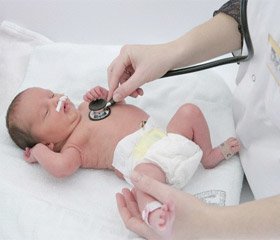Журнал «Медицина неотложных состояний» 1 (56) 2014
Вернуться к номеру
Assessment of performance endothelium’s activity of newborns with hard birth asphyxia
Авторы: Ovcharenko S.S.
Рубрики: Медицина неотложных состояний
Разделы: Клинические исследования
Версия для печати
Introduction. The increase of cytokines in the systemic circulation is the beginning of a systemic inflammatory response published data indicate. Cytokines stimulates the vascular endothelium. In response, the endothelial cell increases the secretion of endogenous the most powerful vasodilator nitric oxide. Moreover, activation of the endothelial cell initiates blood coagulation system disorders. Thromboresistance vascular wall is kept by constant basal secretion of the physiologically significant antiplatelet factor thrombomodulin. Substanceswich significantly could influence on its production are not currently known. With the development of systemic inflammation, endothelial cells lose thrombomodulin, which in extreme cases is accompanied by disseminave intravascular coagulation. А.К. Kirsanova [1] thinks that a generalized activation of the endothelium is a key pathogenic factor in the development of systemic inflammatory response, I.N. Leyderman [2], – systemic inflammatory response – it's a symptom that characterizes the severity of the reaction system in endothelial cells. In our previous studies, we studied the dynamics of the content of cytokines and found that infants who suffered from severe asphyxia at birth, on the third day of life SAR develops [3], and the aim of this work was to study the activity of the endothelium, in neonates after severe asphyxia at birth.
Materials and methods. We examined 34 children with full-term newborns SAR who were treated at the Department of Anesthesiology and Intensive Care Regional Children's Clinical Hospital № 1 with severe asphyxia. Sick children were transported with the emergency team of medical care for newborns from medical institutions of Kharkiv region. They were in extremely severe condition due to acute respiratory failure and cerebral lesions in patients withouttheinflammatory focuses. The prosthesis of respiratory function was carried out from the first minutes of life with modern respirators. Continuous monitoring of the child was held using the tracking equipment, standard paraclinical, biochemical and bacteriological studies.
All children were divided into 3 groups: control group – infants asphyxiated mild (15 people), group I – have recovered neonates (25 people), group II – dead newborn (9 people).
Dynamic study of indicators interleukin-4, interleukin-6, of nitric oxide derivatives, platelets was conducted in all children.
The results were processed using the statistical software package for general use Statistica for Windows version 6.0.
Results. The data obtained from dynamic research activity indicators endothelium show the functional activity of endothelial disorders in newborns underwent severe asphyxia at birth, appear on the third day of the disease in the form of thrombocytopenia and reduction of nitric oxide metabolites. It is characteristically, the reduced level of nitric oxide and mild thrombocytopenia in the group of infants with lethal outcomekept on the seventh day of the disease. Furthermore, obtained data show violation of a functional endothelium combined with activation of the cytokine system in the form of increased levels of both proinflammatory and anti-inflammatory cytokines in all patients on the third day of life. In the group of recovered infants on seventh day of life normalization of functional activity of the endothelium on the background of the stability level of the proinflammatory cytokine and increase of level of anti-inflammatory cytokine are marked.
Patients with lethal outcome different picture are present:violations functional activity of the endothelium on the background depletion of the cytokine system in the form of a sharp decrease in the content (2 times) as a pro-inflammatory, so anti-inflammatory cytokines.
Thus, changes in the endothelial cells in patients with lethal outcome are more significant than in recovered infants suffered from severe asphyxia at birth, while they are presented in varying degrees throughout the disease. Moreover, in patients with a lethal outcome to the seventh days of life there is a sharp decrease of theproinflammatory cytokine interleukin-6 and anti-inflammatory cytokine IL-4, indicating of the depletion of the cytokine system.
Conclusions.Infants suffered from severe asphyxia at birth, on the third day of life violation of the functional activity of the vascular endothelium on the background of high levels of proinflammatory and anti-inflammatory cytokines are manifested.
Persistent thrombocytopenia, low nitrogen oxide on the background of unbalanced cytokinemia for seven days is a bad prognostic sign of the disease.

